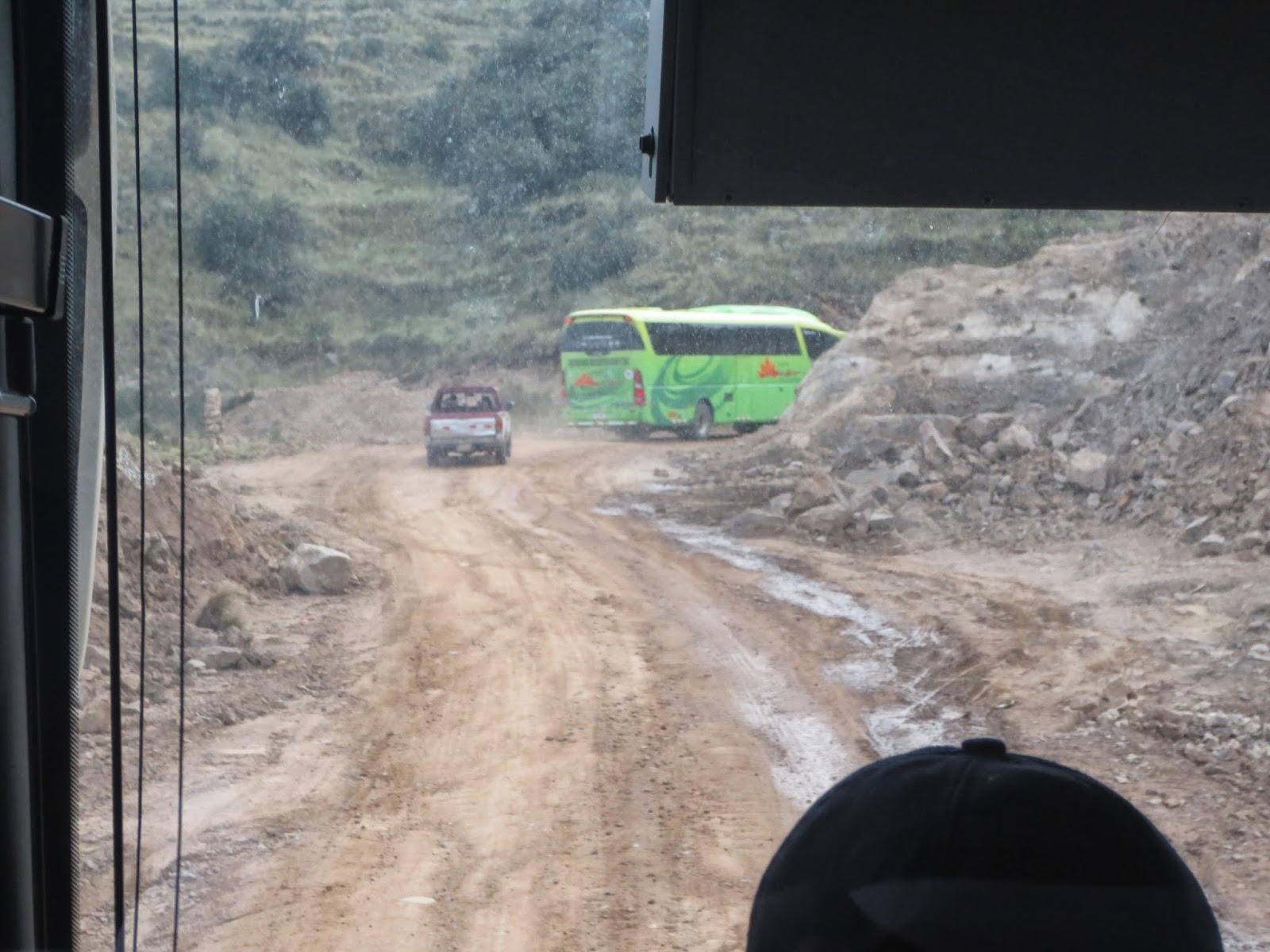My plan to travel from Puno to Cusco changed a number of times. This was due to the miners' strike, which has been disrupting travel this past few days.
My first plan had included an overnight stop in Sicuani to visit a couple of Maude's connections: Jesus is a teacher and I was going to visit his school. Jorge has a natural dye business, and I was hoping to visit there, especially to see the use of cochineal.
Monday the word was the buses were only travelling at night, to avoid most of the strike action. I didn't want to go at night because I would miss the fabulous views en route, and it would also deliver me to Sicuani at about 5 a.m.
At that point, I started to check out the train option. The Andean Explorer is a luxury tourist train, with observation deck and elegant dining room. It is much more expensive than any bus, but it was looking very tempting. Perurail assured me that Wednesday's train would travel as normal, but that I should wait until Tuesay late afternoon to book. I was getting very excited about the train trip, because I love travelling by train.
At 4 p.m. Tuesday I was informed that the train would not be travelling Wednesday because the miners had blocked the track. Bummer!!! Then my only option (because I had to get to Cusco by Thursday morning to meet Jill) was to take the bus on Wednesday. Luckily Inka Express was still doing a day trip, but leaving at 4 a.m. and taking a back road to avoid trouble.
So I had to get up at 3 a.m., which I absolutely hate. But the bus was very comfortable, with reclining seats, making for easy napping throughout the day. There was a "hostess" who served coca tea, coffee, and cold drinks throughout the trip. We also had an excellent tour guide.

The first five hours of the trip we travelled on a dirt road, which was under construction. Three buses travelled together to help each other out. Many times -probably more than a dozen times -the buses had to stop to do some road repairs so that we could get through. The drivers moved rocks and used shovels to level the worst spots. Then they took turns to guide each other through.
Finally we rejoined the main road, and it was a smooth trip after that. We stopped at a number of interesting sites.
 |
| Election signage |
I had a steaming hot shower before bed, which was a delight. They served an excellent "American" breakfast with fresh orange juice, fresh fruit with yoghurt and granola, scrambled eggs with bread, butter and jam, and tea or coffee.
Jill should be arriving shortly. The hotel has sent a taxi to pick her up at the airport. I am waiting to switch rooms from a single to a double.





























































